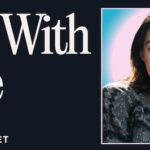Phillipa Soo
Actress, Singer, & Author
-
Meet and Greet

History has had its eyes on Phillipa Soo (she/her) ever since her breakout role as Eliza in Broadway’s Hamilton. (Yes, that Hamilton.) Now, the actress and singer has officially added author to her already impressive resume with NYT bestseller Piper Chen Sings—an empowering story about a girl who turns her performance jitters into confidence when faced with singing a solo at her school concert.
Here, we chatted about the inspo behind her debut book, the importance of representation in children’s literature, and What Comes Next? for those who read it.

What inspired this beautiful book?
Piper is inspired by a younger version of myself. Growing up, I definitely had nervous butterflies when it came to performing. Many times I’ve been asked, “What would you tell your younger self?” and “What do you do when you get nervous?” This book is an answer to those questions.
It’s incredible to see representation grow in children’s literature, especially with stories like yours. Why do you think this is needed now more than ever?
In the children’s book world, there’s a lot of conversation about books being “mirrors” and “windows” for young people. There’s so much to gain from seeing yourself in the stories you read, or exposing yourself to a world different from your own. That’s why representation is needed, and will always be needed.
Was there a kid’s book or series you loved growing up?
I was a huge fan of Angelina Ballerina. I started out doing ballet as a kid, so it was no surprise that I ended up being a performer [laughing.]
You wrote Piper Chen Sings with your sister-in-law Maris. (Which is seriously so special!) How did that affect your first-time experience with writing children’s literature?
My partnership with Maris was essential in the creation of this story. It was an extremely fulfilling and fun creative process, too. This book is very much an extension of both of us—myself as a performer, and Maris as a psychotherapist and mother.
And lastly, who do you hope this story reaches? What message do you want that person to receive?
I hope that children and adults alike are able to use this story as a tool to understand themselves, and to start conversations about mindfulness, the arts, culture, and heritage.



